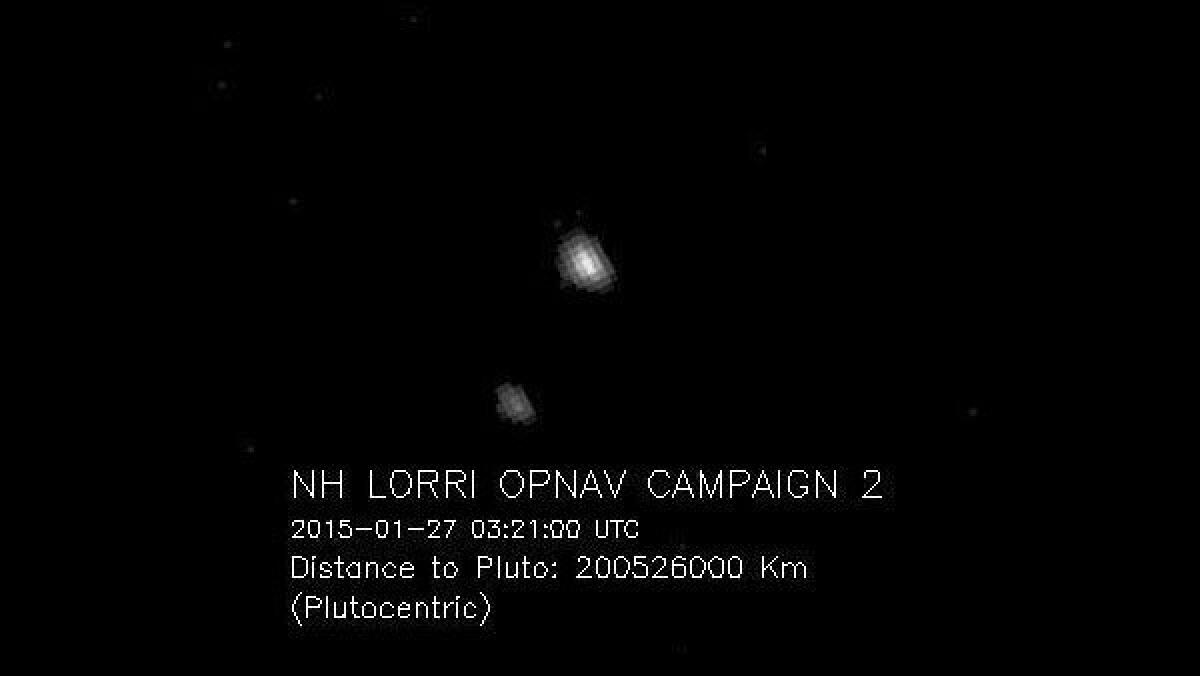NASA space probe sends back first pictures of Pluto in 2015

NASA’s New Horizons space probe has sent back some new images of the dwarf planet Pluto and its largest moon Charon as seen from more than 126,000 miles away.
Over the coming months, the grand piano sized spacecraft will take thousands of pictures that will gradually bring the icy body and its many moons into focus.
What you are seeing here is just the tip of the visual iceberg.
“The dwarf planet will continue to grow larger and larger in the images as New Horizons spacecraft hurtles toward its targets,” said Hal Weaver, New Horizons project scientist at the Johns Hopkins University Applied Physics Laboratory (APL) in Laurel, Md.
“The new LORRI images also demonstrate that the camera’s performance is unchanged since it was launched more than nine years ago,” he said in a statement.
By the middle of July, New Horizons is expected to send back images so sharp that you would be able to make out the runways of LAX in a comparable picture of Earth.
Those later pictures will help scientists better understand geologic processes on Pluto and its biggest satellite. They will also reveal whether the planet is covered in icy mountains and deep crevices. One hypothesis about the dwarf planet’s surface is that it will look like an extreme version of Antarctica.
These earlier, smudgier pictures serve a different purpose. Over the next few weeks, New Horizon’s Long-Range Reconnaissance Imager (LORRI) will snap hundreds of pictures of the dwarf planet against star fields to help engineers on Earth determine exactly how far New Horizons is from Pluto.
After studying these “optnav” images, the New Horizons flight team will execute the first course-correcting engine maneuvers on March 10.
New Horizons has spent nine years speeding toward Pluto, covering more than 3 billion miles of interplanetary space.
It is expected to make the closest approach to Pluto on July 14.
Science rules! Follow me @DeborahNetburn and “like” Los Angeles Times Science & Health on Facebook.







